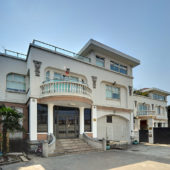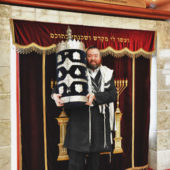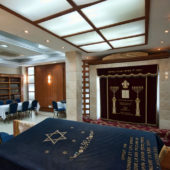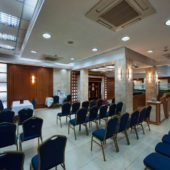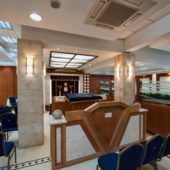The largest of Shanghai’s three synagogues includes a pre-school, mikvah, koshter restaurant, catering and food market.
When Hong Kong and four other Treaty Ports along China’s eastern coast opened to foreign traders, the first Jews came to Shanghai. The initial wave of Jewish settlers, in 1848, were Sephardic Jews from Baghdad. Many of these early settlers were extremely successful financially, establishing landmark businesses and buildings such as the Sassoon House, Metropole Hotel and Embankment Building. Between 1920 and 1937 there was a wave Jewish migrants from Russia. During World War II the city of Shanghai provided refuge to a third wave of Jews escaping the Holocaust in Europe. In total, seven synagogues were built in Shanghai before World War II and the following revolution. None of those early synagogues are active today, in the 21st century.
At the end of World War II Shanghai was home to about 24,000 Jews. With the establishment of the People’s Republic of China in 1949, most of them emigrated to Israel, United States, Hong Kong and Australia. With the liberalization of China in recent years, Chabad has established numerous synagogues to serve the growing communities of Jewish people who make their homes either temporarily or permanently in China.
The Shanghai Jewish Center, a project of Chabad, is one community with three locations. There is the Shanghai Jewish Center (Synagogue Beth Menachem), located in Hongqiao; the Intown Jewish Center (Synagogue Beth Yaakov), in the downtown area and the Jewish Center of Pudong in the Century Park area. These facilities offer Shabbat meals, a Kosher restaurant and catering, kosher mini-market, Kindergarten and pre-school, Hebrew school, Jewish library, Mikvah, adult education and children’s activities. All under the guidance of Rabbi Shalom D. Greenberg who is the chief rabbi of China.

